Some of the most historic or significant events in our country’s history took place in a bar. Hard to believe, I know, but just read on about all of the famous episodes that happened over a brew in a local watering hole.
10. George Washington Says Farewell to His Officers, Fraunces Tavern, New York City
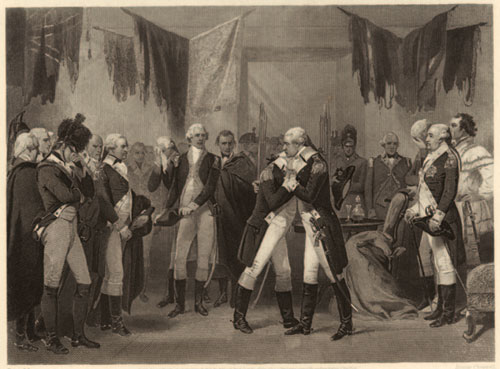
On December 4, 1783, following the end of the Revolutionary War, George Washington abruptly retires his commission and resigns as the Commanding General of the Continental Army. He summons his officers to Fraunces Tavern in New York City and delivers an apparently heart-moving address that includes a long statement about his appreciation for his officers and everything they had done over the past decade. It ends with General Washington personally embracing each of them and then saying goodbye. A moving moment by all accounts, but one that put a tavern solidly in the history books.
9. The United States Marine Corps is Founded, Tun Tavern, Philadelphia, PA
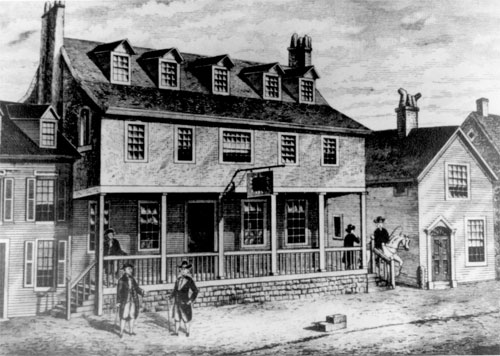
On November 10, 1775 the Continental Congress commissioned Samuel Nicholas, the owner of Philly’s Tun Tavern, to raise two battalions of Marines in Philadelphia. The tavern’s manager, Robert Mullan, was the “chief Marine Recruiter” and so immediately set up a station in the tavern itself. By all accounts he quickly filled the rolls with local recruits looking for adventure and the chance to serve.
8. O. Henry Pens Gift of the Magi, Pete's Tavern, New York City

The year is 1905 and a writer by the name of William Sydney Porter is residing at 55 Irving Place in New York City. Just down the street is a tavern that he frequents as often as he can, eating and throwing back a few, even sketching the outline for his short stories. The place—Pete’s Tavern—even appears in one of his stories, The Lost Blend. The writer, known by his pen name O Henry, takes a favorite booth one day (second from the front) and begins penning what would become one of his most cherished works: The Gift of the Magi. Now true, this episode doesn’t have the historical impact of some of the other events, but the irony in the fact that one of the most beloved, Christmas-time stories (Disney made a short of it for God’s sake) is just too delightful to leave out!
7. John Andre is Imprisoned While on Trial, Old '76 House, Tappan, NY
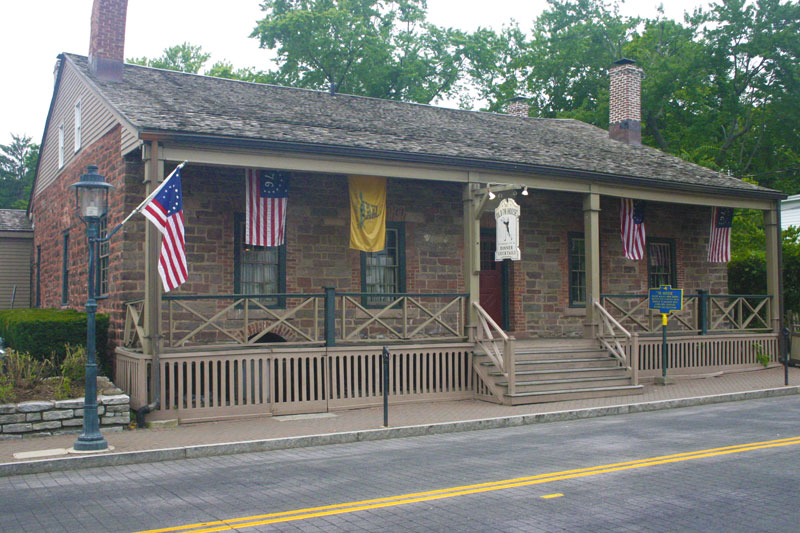
In September 1779, British officer Major John Andre intended to conspire with Benedict Arnold to capture the Fort at West Point. Before he got his chance he was captured by Continental Soldiers. He was marched back to Tappan, New York and imprisoned in the only Public House in the town, Mabie’s Inn. He was held there through his trial in the nearby church, and then was hanged for spying just up the road. The tavern is still there, now known as ‘Old 76 House, and celebrates its place in history as having played a small role in the history of the country’s founding.
6. The Boston Tea Party is Planned, Green Dragon Tavern, Boston
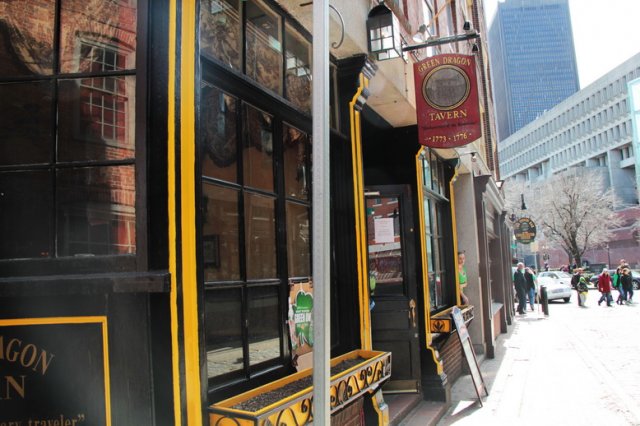
Speaking of playing a role in the country’s founding, one tavern played a central role in one of the most memorable episodes leading up to the revolution. In December 1773, after months of protesting England’s tax on tea, New Englanders had had enough. A small group of some of the most active patriots met at the Green Dragon Tavern to plan their message to the King. Their eventual answer was to storm three vessels sitting in the bay and dump England’s tea overboard. Their act of defiance would go down in history as one of the most iconic symbols of America’s resistance to tyranny, and the whole thing was planned in a bar. (Note: the Green Tavern found in Boston today is a replica of the original structure which burned down in the early 19th century and holds no authentic connection save for its name)
5. George Washington Meets John Adams, City Tavern, Philadelphia
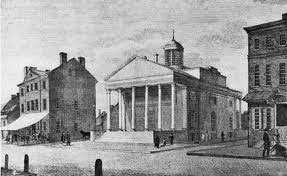
While serving as delegates to the First Continental Congress in Philadelphia in 1774, George Washington and John Adams met for the first time. Legend contends that the two first met at the City Tavern, a more refined tavern for the city of Philadelphia built only a year before in 1773. The tavern was actually a favorite of most delegates, and Ben Franklin was known as a regular here. Throughout the Continental Conventions City Tavern saw deals struck, behind-the-scenes meetings held and the ultimate in politicking by the country’s supreme masters of politics.
4. President Lincoln Slings the Drinks, New Salem, IL
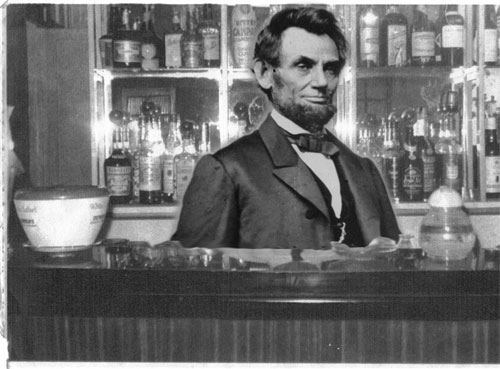
In New Salem, Illinois, a young Abraham Lincoln went into business with an associate named William F. Berry, purchasing three general stores in the area aptly named, Berry and Lincoln in 1833. The stores actually doubled as bars and bottle shops, and sold a variety of sundries, but they specialized in drinks. According to historians they sold brandies, gin, wine, rum and whiskey. Meals and lodging were also available. For the purposes of this article, it’s important to note that Abraham Lincoln himself tended bar and poured the drinks (an “honest pour” we’re sure…get it?), making him the only president in US history to tend bar.
3. The Working Class Rise Up, Blue Collar Saloons Everywhere

In the late 1800’s the American blue-collar worker was under pressure and under attack. Twelve hour days, six or seven day workweeks and unsafe working conditions were taking their toll. Throughout America’s industrial centers, workers were dying from accidents on the job or even from exhaustion. This was the catalyst for the American labor movement. Because bars were the frequent meeting places for blue-collar workers and immigrants (who usually comprised the bulk of the working class) they became the natural places for many of the first meetings of labor unions. In fact it’s argued that one of the main reasons prohibition was supported by wealthy industrialists like Rockefeller and Ford, was because they wanted to close the saloons in which union sympathizers recruited their members.
2. Women Become Liberated, Speakeasies Throughout the US
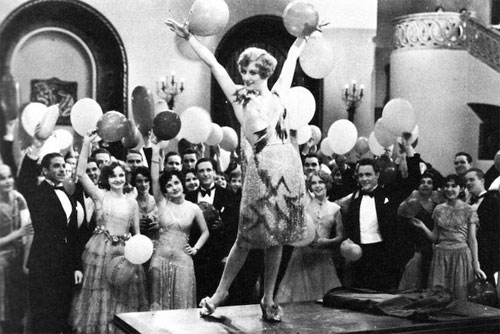
Before prohibition women did not often frequent bars or saloons. In fact the only reason they might is that they worked there (in one capacity or another). However all this changed in the early 1920’s. Speakeasies—illegal bars set up throughout the US—were not only common as hell, they were also fashionable. Being seen at these gin-joints was important, and large-city newspapers even began reporting on the socialites that went to them. So once prohibition was over, it only made sense that women remained. As a cultural movement, then, these illegal bars were largely responsible for liberating women and getting them on equal footing as men.
1. First Non-Native American Male Born in the New World, Block and Christiansen's New Amsterdam
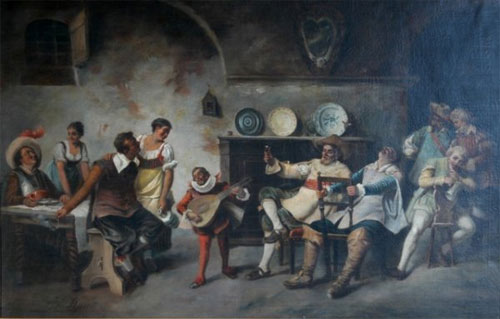
In 1612 two Dutch immigrants, Adrian Block and Hans Christiansen established the very first brew house in North America on the southern tip of what is now Manhattan. Brew Houses of the day were pubs that brewed and sold their own ale to go and to drink on premises. Two years later, in 1614, the very first non-native American male was born in North American, at that very same brew house. His name was Jean Vigne and according to history, he grew up to be a brewer as well!

